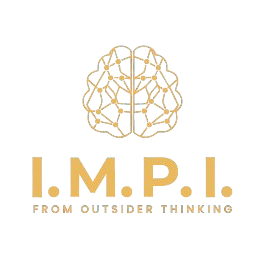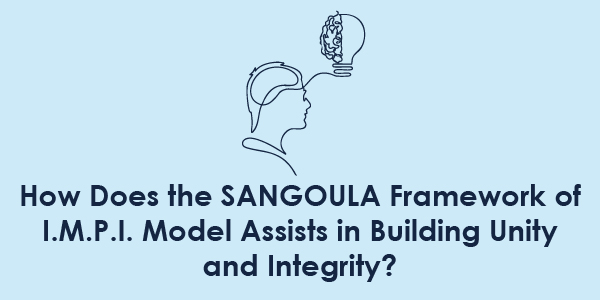In a world where public sector challenges demand cohesive strategies, the SANGOULA framework of the I.M.P.I. model stands out as a practical solution for unifying teams, strengthening integrity, and enhancing operational efficiency. Using a dual approach—horizontal linear deployment for gradual sector-wide improvement and vertical linear development for targeted management goals—SANGOULA creates a blueprint for integrated growth, particularly in public sector organizations.
By applying the Four-Square Principles of the I.M.P.I. Model (Identification, Measurement, Planning, Implementation), SANGOULA establishes a structured path to tackle sector-specific challenges, creating a ripple effect of collaboration, responsibility, and trust. Here’s how SANGOULA contributes to building unity and integrity in public organizations.
The Foundation of Unity through the Identification Process
The first step in the SANGOULA framework involves Identification—recognizing specific challenges and areas needing improvement within public sector units. This stage is not only about pinpointing problems but also about acknowledging shared challenges. When employees and managers participate in this process, they gain a mutual understanding of issues that impact them all.
The Identification phase unifies teams by promoting open communication and a shared goal of improvement. Employees feel heard, validated, and motivated to contribute towards addressing these common challenges. By encouraging collaboration from the start, the SANGOULA framework lays a foundation for unity, setting the tone for teamwork and collective ownership of solutions.
Measuring Success Together for Accountability and Trust
The second step, Measurement, is critical to building accountability, a cornerstone of both unity and integrity. In this phase, the SANGOULA framework employs data and analytics to assess the identified challenges. This includes evaluating resources, capabilities, and constraints to achieve realistic goals.
Measurement is vital because it adds transparency. When public sector employees see transparent and accurate metrics that reflect their work, it enhances their trust in the system. Team members from various departments can see how their efforts contribute to the organization’s objectives. Clear, measurable goals foster a sense of shared responsibility and empower employees to hold each other accountable, strengthening organizational integrity and creating a united front toward progress.
Strategic Planning that Bridges Differences
Planning is where SANGOULA’s horizontal and vertical development come together. In this stage, leaders collaborate with teams to create actionable strategies for both immediate and long-term goals. Horizontal linear deployment brings departments together by aligning objectives across the organization. This strategic planning encourages input from all levels, from ground staff to executive leaders.
The approach is unique in that it creates horizontal alignment—a cross-functional collaboration where different units work together, bridging differences between departments. At the same time, verticaldevelopment aligns these strategies with upper management’s vision, ensuring the organization is united in purpose.
When planning is done collaboratively, it breaks down silos within the organization. Employees from diverse departments gain exposure to each other’s work, allowing them to recognize their interconnected roles. This cross-functional perspective nurtures mutual respect and understanding, making the entire organization work as a unified entity with a shared mission.
Implementation with Integrity for Sustainable Growth
The final step in the I.M.P.I. model is Implementation, where strategic planning turns into action. This phase depends heavily on integrity, as it requires consistent adherence to established processes and accountability in following through with the planned initiatives. SANGOULA’s focus on resource optimization ensures that actions are aligned with both horizontal and vertical goals, fostering an environment of integrity.
With horizontal linear deployment, SANGOULA enables an efficient roll-out across units, encouraging collective progress while respecting each team’s pace and needs. The vertical link-factor projection within the framework ensures that all levels of the organization—from the highest leadership to operational teams—are in sync with the organization’s ethical standards and performance expectations.
By emphasizing integrity in implementation, SANGOULA encourages responsible action and fosters a culture where employees are encouraged to uphold ethical practices. Public sector employees often face complex choices; with a structured, integrity-driven framework, they can make decisions that align with organizational values. This not only fortifies integrity but also inspires trust among employees, building a cohesive, unified organization.
Strengthening Internal Relationships through Accountability and Respect
Beyond structured processes, SANGOULA’s framework instills values of accountability and mutual respect, which are foundational to unity and integrity. The collaborative steps in SANGOULA help build relationships across teams and departments, encouraging employees to support each other and take ownership of both successes and failures.
The I.M.P.I. model’s Measurement and Implementation stages promote a feedback-oriented culture. With transparent metrics and shared responsibility, employees develop a sense of accountability. This is especially crucial in the public sector, where results directly impact the public. The framework creates an environment where everyone understands their role, feels valued, and is motivated to contribute positively, ultimately fostering unity within teams.
Using SANGOULA for Continuous Improvement and Trust
The SANGOULA framework isn’t a one-time implementation but a continuous loop of improvement. As teams regularly revisit the Identification and Measurement phases, they can adapt to new challenges and opportunities. This culture of continuous evaluation and adjustment builds trust in the system, as employees see their efforts reflected in tangible results over time.
When public sector teams trust their framework, they are more likely to feel committed to the organization and its mission. This trust, grounded in transparent processes and measurable improvements, enables employees to work with integrity, enhancing overall organizational unity and performance. Each department sees its progress not as isolated achievements but as essential contributions to the organization’s collective success.
The SANGOULA Framework as a Path to Unity and Integrity
Through the I.M.P.I. model, SANGOULA unites public sector teams under a shared mission and ethical values. Its dual approach—horizontal and vertical development—enhances collaboration, fosters accountability, and encourages mutual respect. By promoting transparent processes and shared goals, SANGOULA builds an organization where unity and integrity thrive, leading to a more cohesive and effective public sector environment dedicated to its mission and values.

